|
I found this great article written by Angela Epstein in Mail Online on Dec 7, 2010 The experts’ rules for beating household bugs that can trigger heart disease, allergies and strokes Most of us never give a second thought to how long we’ve had that old chopping board – or those pillows, even that hairbrush. But while they may all look clean and serviceable enough, these seemingly innocent household items can actually harbour potentially harmful bacteria if used too long, regardless of how often they’re cleaned. Here, with the help of scientific experts, we examine how often you should spring clean those everyday household items – and when it’s time to simply throw them in the bin . . . 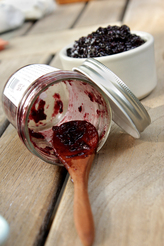 WOODEN SPOONS Wood is more porous than plastic or metal, making it more susceptible to carrying germs and bacteria, explains John Oxford, Professor of Virology at Barts and the London Hospital. The bacteria particularly prevalent in the kitchen is E. coli, usually from raw meat or children with poor hygiene habits. This can lead to severe food poisoning. Beware: Seemingly innocent household items can harbour harmful bacteria Don’t put wooden spoons in the dishwasher, especially not on a regular basis, as they may crack and therefore provide a haven for bacteria. Instead, soak in disinfectant for about half an hour and then wash with boiling soapy water. REPLACE: After five years, but earlier if the wood cracks, or if any part becomes soft or dark, as this could mean the wood is rotting and retaining bacteria. 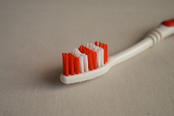 TOOTHBRUSHES Research suggests that a range of serious health problems, including heart disease, stroke, arthritis and chronic infections could be linked to ‘unhygienic’ toothbrushes. A study by Manchester University found that the average toothbrush contained about ten million germs, including a high percentage of potentially fatal bacteria such as staphylococci, streptococcus, E. coli and candida. ‘You can’t see the build-up of germs, but you can see the distorted and broken bristles that will harbour the bacteria, explains Wimpole Street dentist Dr Charles Ferber. REPLACE: Every three months.  BATH TOWELS These need to be washed once a week at 90c or more to wipe out, staphylococcus aureus, a bacteria that can be transferred from your skin to the towel. Normally benign, it can cause infection if it comes into contact with a wound — and it can also live on dry surfaces. REPLACE: Use indefinitely if washed at high temperatures without damage. 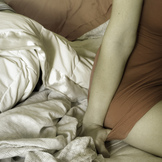 PILLOWS AND DUVETS Unwelcome guests: Dust mites can live in your duvet and pillows A brand-new pillow doubles its weight in three years, thanks to remains of dust mites that build up inside it. This could aggravate hay fever, eczema or asthma, particularly since your face is touching the pillow and you will be breathing in the remains, explains Professor Jean Emberlin, director of Allergy UK. Dust mite waste also leaves people more susceptible to rhinitis (stuffy nose) and sinusitis. Washing your pillow will help — do so every few months at 60c for at least 20 minutes. If you have asthma or allergies, buy hypoallergenic pillows, which are usually made from foam. Duvets also harbour dust mites and skin debris in the same way. In one study by the University of Worcester, ten typical duvets were analysed and scientists discovered they contained up to 20,000 live house dust mites along with bacteria and fungal spores. Duvets should be washed every six months. REPLACE: Pillows, every two years; duvets every five years. 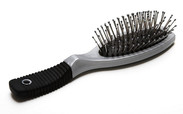 HAIRBRUSH One hair follicle can hold 50,000 germs and your brush can contribute to this. Brushes can also collect residues of hair products which can become sticky and attract dirt. ‘We also have lots of bacteria on the skin and what may affect one person may not affect another,’ adds dermatologist Dr Andrew Wright, consultant dermatologist with Bradford Hospitals NHS Foundation Trust. So diseases such as impetigo, a contagious skin infection that usually produces blisters or sores on the face, neck or hands can spread from one person to another by sharing a brush. The brushes should be washed in hot, soapy water every week and left to dry. REPLACE: Every four years — but sooner if the bristles get damaged as these can scratch the scalp, causing potential infections to spread.  PLASTIC CHOPPING BOARDS The average chopping board is home to 50 times more bacteria than a loo seat, says the Hygiene Council. That’s because while people perceive loo seats as needing regular cleaning, the same approach isn’t applied to a chopping board, explains Professor Oxford. To clean, spray with disinfectant, scrub and then pour boiling water over the board. Keep separate chopping boards for raw meat and poultry and another for vegetables and fruit to prevent bacteria such as E. coli spreading to salads or fruit, for instance, which will be eaten raw and not cooked at the high temperatures needed to destroy the bacteria. If your chopping board starts to develop deep marks from knife cuts, it’s time to replace the board, as bacteria can lurk in the grooves. REPLACE: Three years. 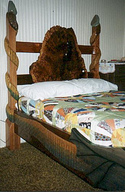 MATTRESSES We excrete half a pint of moisture every night, says the Sleep Council. This, and the annual 1lb of skin scales we shed, provides a constant source of food for dust mites. The average bed contains more than 10,000 house dust mites (resulting in more than two million droppings), according to figures from Allergy UK. Even if you haven’t got hay fever or allergies, being in constant contact can make you allergic, particularly if there are allergies already in the family, says Professor Jean Emberlin. Keep mattresses clean by stripping the bed and vacuuming it at least once a week, he adds. REPLACE: Every five years though if you vacuum every week it can be up to ten years. 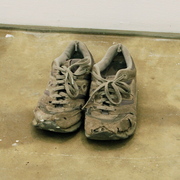 TRAINERS Mould and fungal infections can flourish in trainers, particularly as they are often stored in a warm, dark environment such as a wardrobe or cupboard under the stairs. A recent study found 100 times more mould in old shoes than in a loo. Trainers and running shoes can lose their support as the material gives way with use, leading to foot strain, explains Mike O’Neill, a consultant podiatrist at the Princess Grace Hospital, London and spokesman for the College of Podiatrists. You should wash trainers once a month with cold, soapy water and leave out to dry naturally. REPLACE: Once a year or every thousand miles. 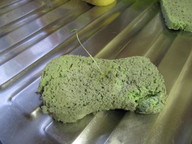 KITCHEN SPONGES/CLOTHS The warm, damp and porous nature of kitchen sponges make them an ideal breeding ground for bacteria. In these conditions one bacterium can multiply to more than four million in just eight hours. This can make them up to 200 times more infested than a lavatory. A study by the University of Arizona found that most sponges in kitchens hold large numbers of bacteria including E.coli and salmonella. They also spread germs around easily as they are moved from surface to surface. Try to keep different cloths for different jobs — one for worktops and another to wash dishes. Wash cloths in the dishwasher as the high temperature — at least 90c — and the powerful chemicals of the dishwasher tablet should kill bacteria, says Professor Oxford. Sponges should be squeezed out and dipped in disinfectant and rinsed in hot water so hot you can’t put your hand in it. However, an even more efficient way to kill germs is to put the sponges in the microwave. A study by the University of Florida found that two minutes of microwaving on full power killed or inactivated more than 99 per cent of all living bacteria in kitchen sponges. Researchers say it is the heat rather than the radiation that kills bugs. And as microwaves work by stirring water molecules, it is better to put wet rather than dry sponges in the oven. REPLACE: Every month or use disposable kitchen towels instead. 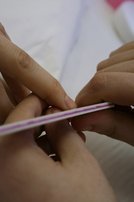 EMERY BOARDS Wooden emery boards are difficult to clean, and can accumulate germs in the crevices. If then used on a split or lifted up nail this could cause a localised infection, says Dr Andrew Wright. And if more than one person uses a board, infection can spread from person to person. As an alternative, invest in a glass nail file, which is not porous and can be washed under very hot running water. REPLACE: After every three uses. 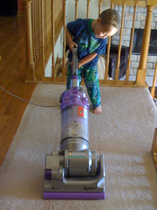 VACUUM CLEANERS: Researchers at the University of Arizona recently found that 50 per cent of the vacuum brushes tested contained faecal bacteria; 13 per cent with the potentially fatal bug E.coli. Spray the brush with a disinfectant after every use — traces of bacteria can survive five days inside the vacuum after you empty the dirt. And disposable-bag vacuums promote more bacterial growth, says the study, so you might want to try the bagless variety. Clean attachments at least once a week by washing in hot, soapy water, or these germs can be transferred to upholstery and furniture and be picked up by hand. 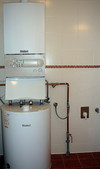 WATER TANKS: Water storage tanks need to be kept clean to prevent sludging, sediment and scale — all of which provide favourable conditions in which bacteria can grow, including the eye bug acanthamoeba which can lead to sight loss and is the reason you shouldn’t wash your contact lenses in tap water. Tanks need to be cleaned at least twice a year by sanitising with bleach. Additionally, a more in-depth cleaning involving draining the tank, removing sediment, scrubbing down the walls, and sanitising should be done every few years.  SOAP DISPENSERS: Just think about how many times a day dirty, germy hands touch the soap dispenser in your bathroom or kitchen — spreading cold and flu bugs as well as faecal bacteria such as E Coli. Kill the germs hiding out on soap and lotion dispensers by washing the tops at least once a week.
0 Comments
Your comment will be posted after it is approved.
Leave a Reply. |
Not Medical Advice
Everything in this blog is for entertainment and information only. It is NOT medical advice. Do not consider anything as medical advice and check with your physician before you take any action from any of our posts.
Categories
All
Archives
March 2020
AuthorI'm not in medicine. I'm just a mild germaphobe sharing information that I find. Interesting Sites |
 RSS Feed
RSS Feed
